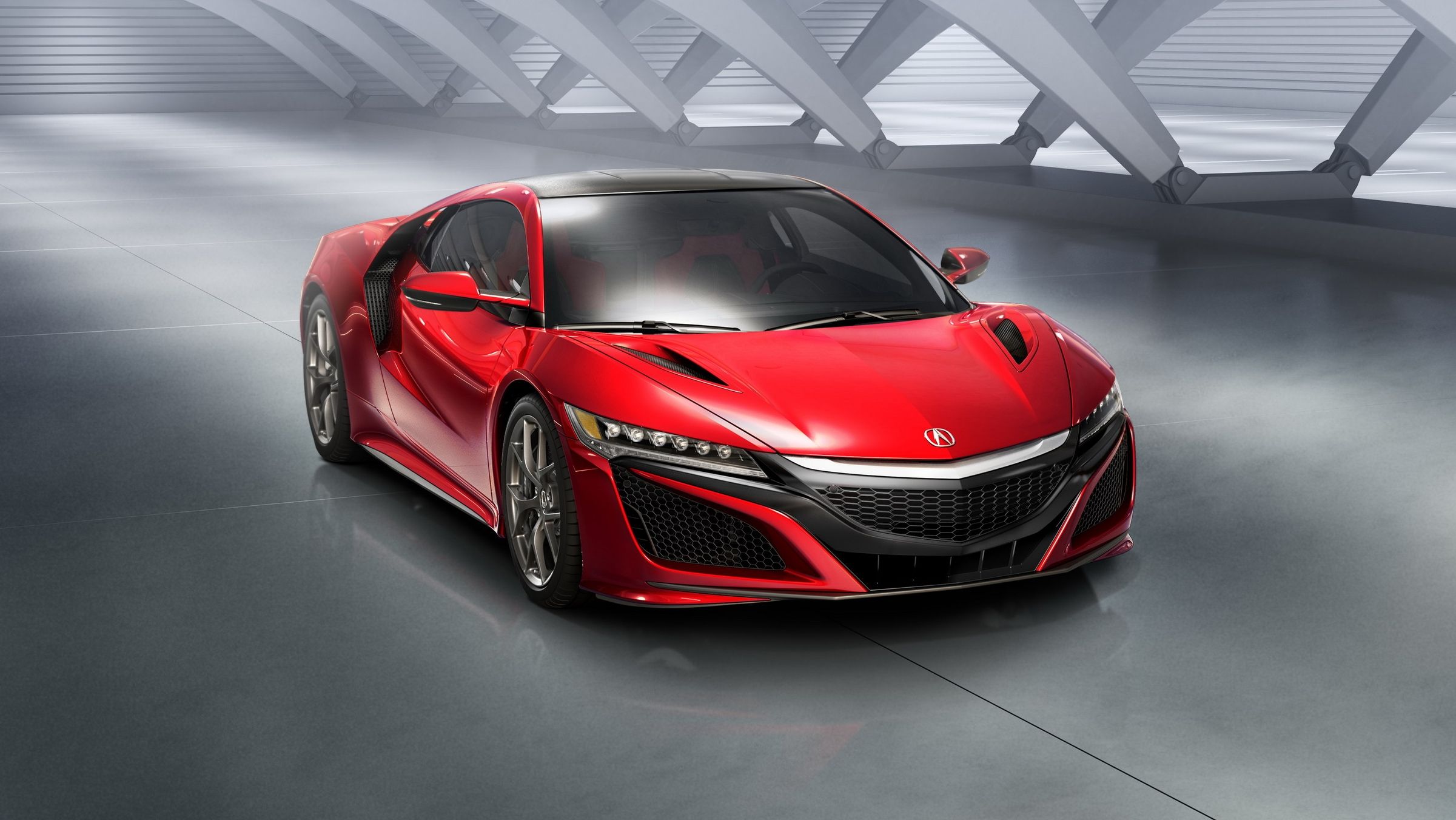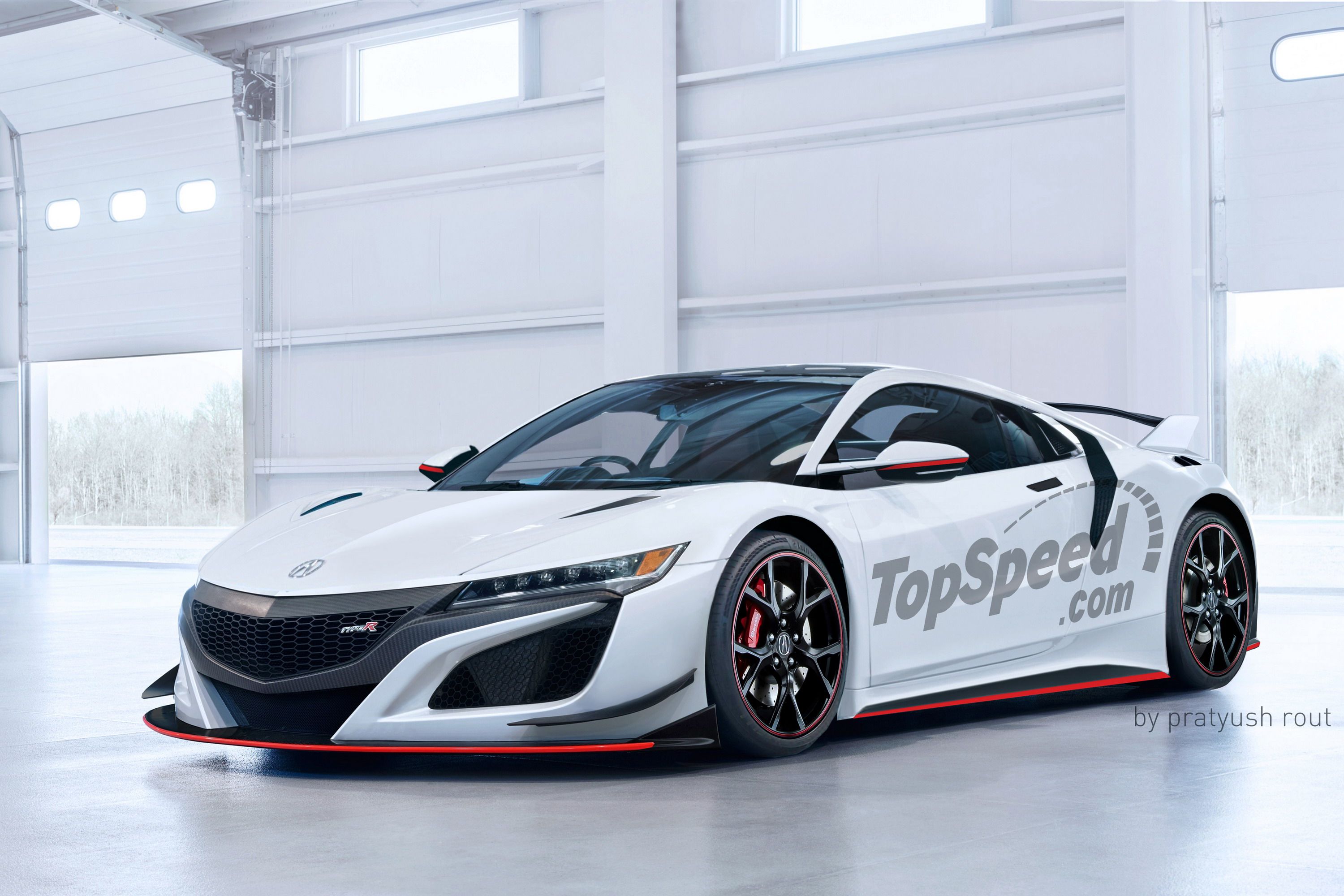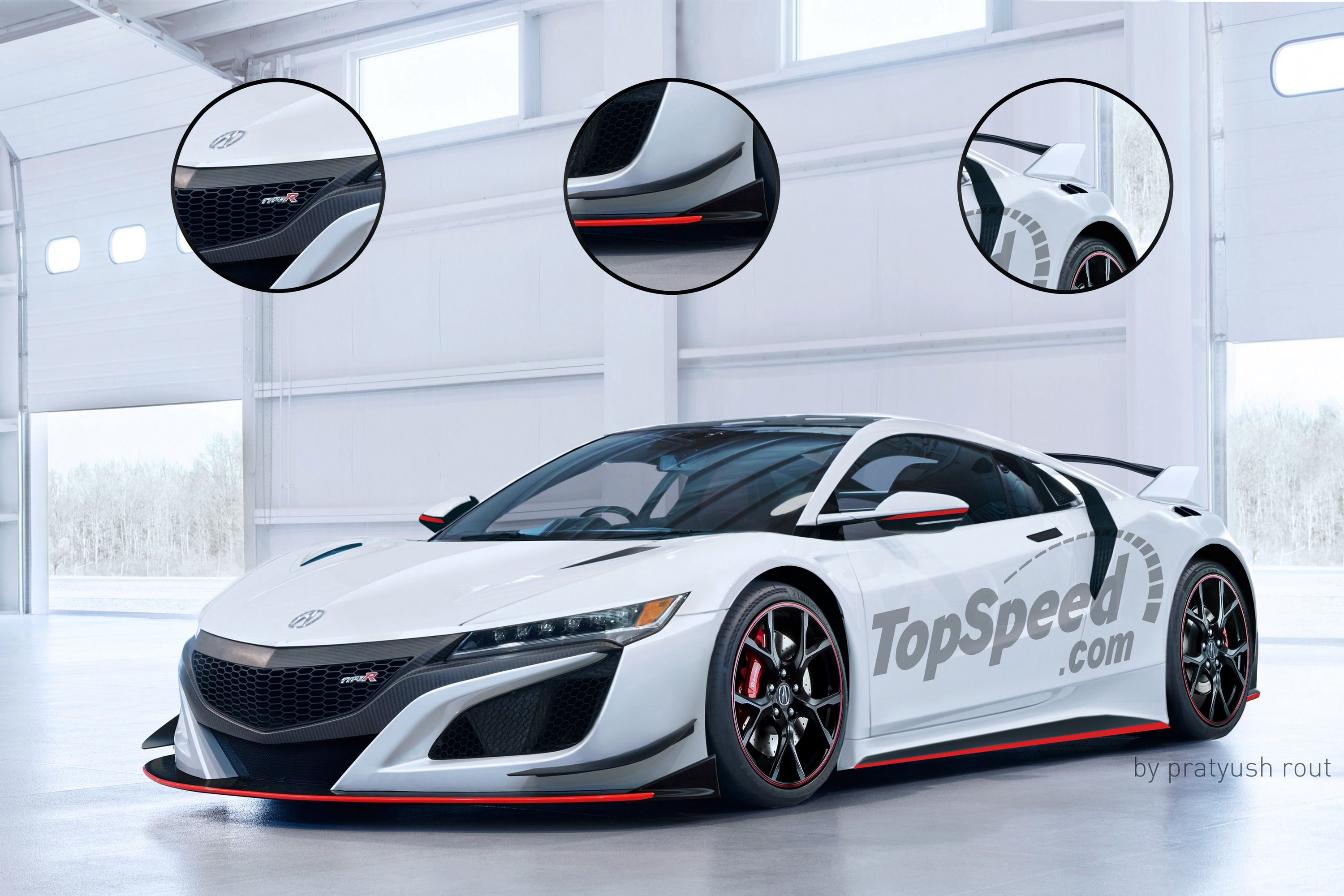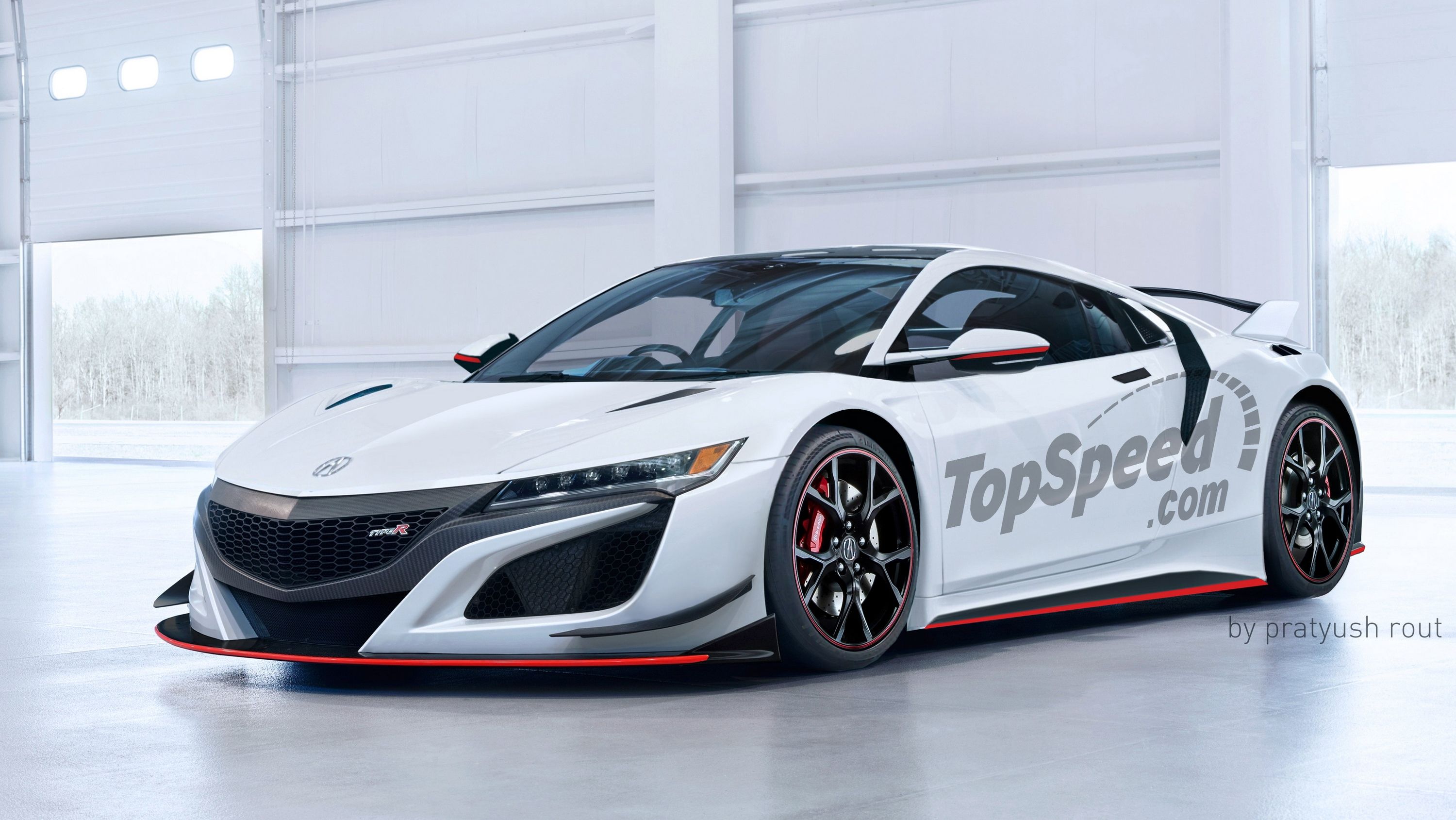The second-generation Acura NSX was introduced in 2015, eight years after the Japanese firm announced that a new supercar is under development. The new NSX succeeds the original sports car that was produced in Japan from 1990 to 2005, but unlike its predecessor, the second-gen car uses a hybrid drivetrain and a significantly more upscale interior.
Despite the new 2016 Acura NSX having been somewhat outshined by the 2017 Ford GT at the 2015 Detroit Auto Show, the model’s sleeves are still filled with a few more aces. The most important one will obviously be the expected Type R variant, which was somewhat officially confirmed by Ted Klaus, the chief engineer in charge of the second-generation Acura NSX. Set to arrive in late 2016 or early 2017 at the latest, the new Acura NSX Type R will probably give nightmares to the engineers in charge of the Nissan GT-R R36, which is also currently in development.
The "regular" 2016 NSX puts out a total of 573 horsepower and 623 pound-feet of torque. The mid-mounted V-6 mill delivers 500 ponies and 406 pound-feet, while the electric motor between the engine and transmission cranks out an additional 47 horsepower and 109 pound-feet of torque. Two motors on the front axle each generate 36 horsepower and 54 pound-feet. With the additional power that would come with the additional of a Type R badge, the Type R should be one hell of a ride.
The 1991 to 2005 NSX spawned a Type R version about two years into the product-cycle, first as a Japan-only Honda and then as an Acura in the United States as well. With over 250 pounds of weight removed compared to the standard NSX, the Type R offered blistering track performance but a much more low-tech cabin due to its lack of air conditioning and less sound-deadening materials. The new NSX Type R will probably not be as barebones as the first generation though, with most of the performance additives coming from the improved hybrid technology sported by the model.
Updated 06/28/2016: Based on the recent rumors, we decided to create a rendering for the upcoming NSX Type R. Let us know in the comments section below what do you thin about it.
Continue reading to find out more about the Acura NSX Type R.
2017 Acura NSX Type R
- Make: Array
- Model: 2017 Acura NSX Type R
- [do not use] Vehicle Model: Array
Exterior
With the regular NSX having already been revealed in production guise, the looks of the Type R variant are not exactly a guessing game, albeit it turns into speculation as soon as you start mentioning specific details. I have an odd feeling that Honda/Acura may resurrect their Championship White color for its reveal sometime in late 2016 or early 2017, and that shade should help bring out all the body modifications.
Even though the first generation is a bit too old to give some meaningful clues, we can look to it for inspiration. Expect to see a slightly restyled front end with some added splitters and a rear wing are expected to adorn the 2017 Type R. Redesigned, lighter wheels and a slightly wider track may also happen, with the twin-turbocharged V-6 maybe even getting some extra air intakes for improved cooling. The car could also be offered with contrasting colors on the splitter, side skirts, mirror caps, and rear diffuser. Our rendering features the trademark Championship White with bright red accents, but other color combinations will also become available.
Interior
Knowing how the original Type R's aggressive weight-reduction program was mainly addressed via a no-frills cockpit, it is expected that the 2017 NSX-R will follow a similar route. This time the climate control may actually be kept though, with other non-essential features being instead deleted from the regular model.
With that being said, the track-ready NSX version will likely sport a pair of slimmer bucket seats made from carbon fiber and little to no carpeting at all. Future NSX-R owners may also have to live without sat nav, an audio system and a reasonable amount of sound deadening. Since all those missing features will likely translate into an enormous loss of weight, they shouldn't argue too much.
Drivetrain
Just like the base version, the NSX Type R is powered by a twin-turbocharged V-6 with direct injection that is augmented by not one, not two, but three electric motors, giving the model all-wheel drive and tons of instantly available torque. Performance figures of the "regular" NSX sit at a total output of 573 horsepower and 623 pound-feet of torque. 500 ponies and 406 pound-feet come from the V-6 while the other 123 ponies come from the three electric motors. That said, the NSX Type R may see a revised powertrain that pumps out in excess of 700 horsepower.
Acura insiders recently revealed some new plans for the NSX that points to the possibility of a Type R some time in the next couple years. According to TheDetroitBureau.com, Acura acknowledges that the electric motors used in the NSX could deliver more power, and the engineers are planning on looking into ways to do that. Options to do so would include a larger battery pack, upgrades to the power electronics system or reviews to the chemistry of the batteries to facilitate faster flow of energy. The insiders also explained that the 3.5-liter V-6 is far from hitting the limits of power output, and engineers are looking for ways to increase horsepower output at each cylinder and may even revise the turbocharging system. It still isn’t acknowledgement that a Type R is written in stone, but it sure does tell us that a faster and more powerful NSX is in the cards at some point.
Prices
The 2016 "regular" NSX retails for $156,000 before options, so the Type R should keep its starting price under $200,000, making it quite a lot cheaper than some of its Italian rivals.
Competition
2018 Nissan GT-R R36 Nismo
Although the R36-generation of the GT-R has not been unveiled as of June 2016, the new Godzilla will probably be the most cross-shopped model with the NSX after it arrives. Using a "more is more" philosophy that doesn't put too much emphasis on weight reduction but more on higher power and better traction, the 2017 GT-R is in the last stages of development, with its exact specifications still a mystery. A hybridized version of the R35's twin-turbocharged V-6 has been rumored on an "on and off" basis, so it isn't entirely out of the question, but most reports would suggest that the model will simply sport an improved "classic" powertrain without adding more weight, despite using a battery and electric motor.
Read our full review on the Nissan GT-R R36 Nismo here.
2016 Porsche 911 GT3 RS
Without the added weight of a battery and/or an electric motor, the 911 GT3 RS is the closest thing to a competitor from Germany for the NSX-R. Just like the original Type R, the Porsche went to great lengths to shed even more weight from the already-light 911 GT3. So despite a lack of torque and number of driven wheels compared with the Japanese sports car, it should prove to be a worthy competitor in terms of on-track performance. The GT3 RS should actually be the second-fastest production Porsche to lap the Nurburgring Nordschleife, with a time mighty close to the seven-minute threshold, thanks in part to an all-new, flat-six engine.
Read our full review on the 2016 Porsche 911 GT3 RS here.
Conclusion
Now that we’ve seen the new NSX in the metal, and know all about it, we naturally can’t wait to see more. While it has yet to be confirmed, we still expect to see a Type R variant sometime in the future. Don’t expect it to be this year, or maybe even next – Acura engineers will undoubtedly take their time to produce something well worth waiting for. Given the fact that the “regular” NSX Pumps out 573 horsepower, a 20 horsepower increase from each cylinder would be massive, pumping this baby up to almost 700 horsepower. If Engineers can manage to squeeze another 100 horsepower out of the electric motors, the NSX Type R could easily push between 800 and 900 horsepower, and that is definitely Type R material.





